For many first time campers, purchasing a good quality, budget-friendly tent is a top priority and purchasing a Coleman tent might seem like the right choice.
Over the years, I’ve owned and used many Coleman tents. From smaller two person tents used at remote campsites, to large family-sized tents used at campgrounds. I’ve also purchased and used tents from The North Face and Marmot, which are considered more “high-performance” brands.
So, when it comes to build-quality, performance, and cost, how good is a Coleman tent compared to other brands? Should you invest your money and buy a Coleman tent? And, if you do, which Coleman tents are the best?
Well, let’s dive into the the pros and cons of Coleman tents so you can make an informed decision!
Article Contents:
3 Types of Coleman Tents
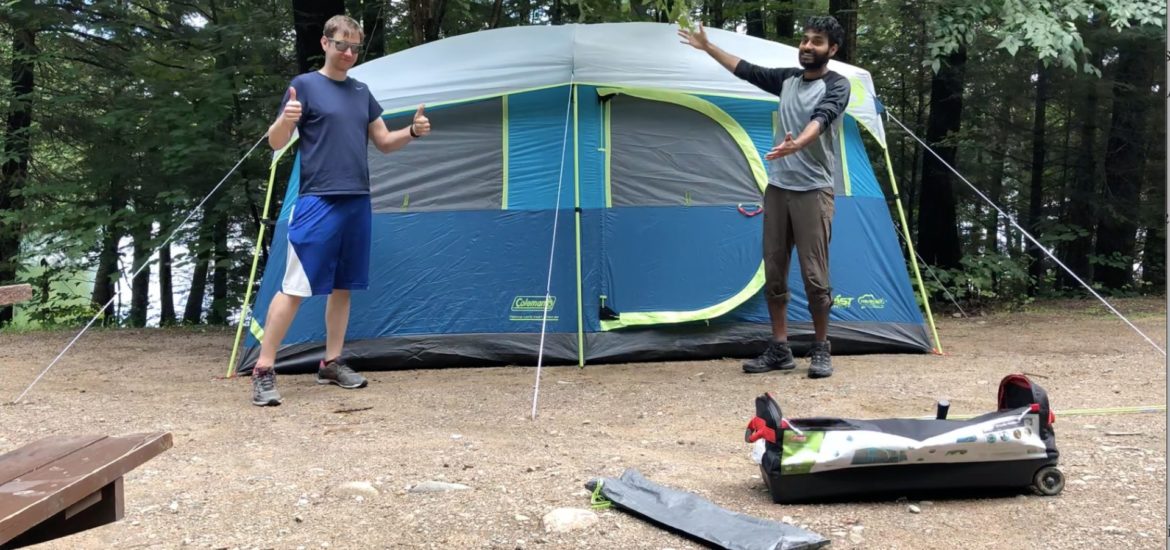
Coleman is a fairly large outdoor gear manufacturer. From stoves to lanterns, Coleman produces a lot of camping gear at fairly competitive prices. This includes a wide selection of camping tents.
Over the years, Coleman has expanded and refined their tent designs. But, we can narrow them down into three distinct categories – Dome Tents, Instant Tents, and Backpacking Tents.
Coleman Dome Tents
The Coleman Dome Tent is a signature design. It’s a simple, yet efficient design which maximizes interior volume and minimizing overall weight.
Most Coleman Dome Tents utilize a two pole system to lift and suspend the tent body. A rainfly is then placed on top, which may require the use of additional poles to prop up the canopy. Guy lines are then used to secure the rainfly to the ground and to minimize rainfall onto the main tent body.
The “Skydome™” variants of dome tents are designed to provide “20%” more head room. This is achieved via a slightly modified pole design. Instead of the poles following a continuous arch around the tent, the Skydome™ tent poles include an elbow connection which breaks up the arch, resulting in a more squared-off shape.
Personally, my first camping tent was a two-person Coleman dome tent that I bought at a local hardware store (Canadian Tire). As a teenager with a very low budget, this tent was exactly what I could afford and lasted perfectly well for its intended use.
Coleman Instant Tents
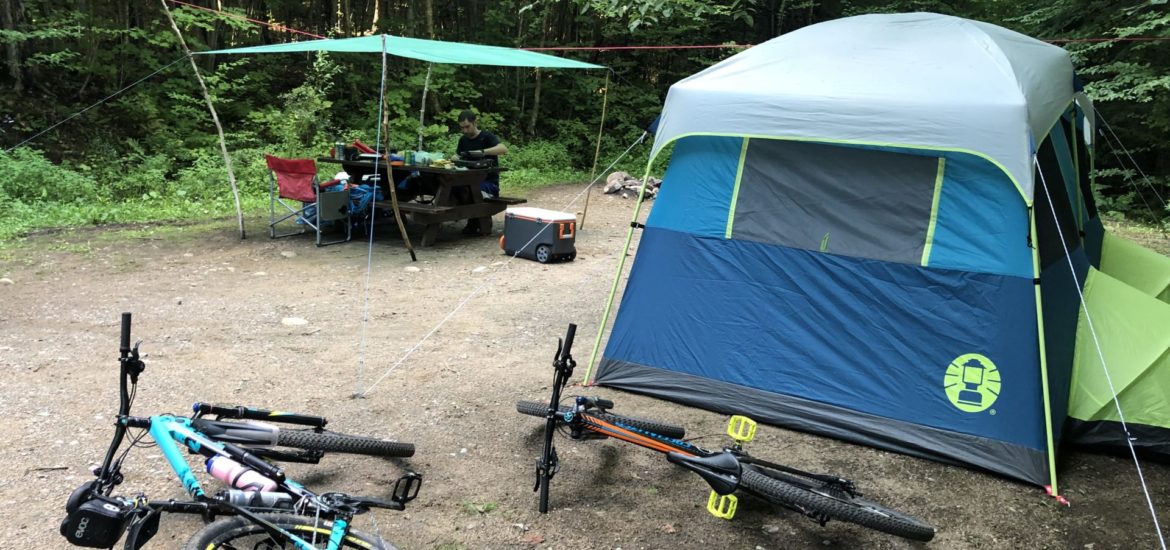
For larger, family-sized camping trips, Coleman offers both Skylodge™ and “Instant” tent designs.
Similar to Skydome™, Coleman Skylodge™ tents are shaped so that there is more head room and an overall more spacious design. These tents are also more square-shaped, which is why most tents are also labelled as “Cabin” style.
Coleman Instant tents are designed to be erected very quickly (after some practice), hence the name. The poles and tent fabric come pre-attached. A hub at the center of the tent roof connects all the support poles. Once aligned, all the outer poles are simply extended to lift the tent into place.
The rainfly only covers the roof and top portion of the tent, and has built-in guy lines for staking into the ground. The windows and doors had both mesh and waterproof panels that can be unzipped to increase circulation.
Recently, a friend and I used a Coleman “Fast Pitch” tent on a mountain biking car camping trip. Although not the same as an Instant tent, the fast pitch design came together very quickly.
The massive tent was able to house our mountain bikes, riding gear, camping equipment, and sleeping area comfortably. Surprisingly, the tent was able to weather a bit of rain and wind gusts with zero issues.
Coleman Backpacking Tents
Recently, Coleman introduced a line of backpacking tents called the Hooligan™. The tent comes in two variants: 2-person and 4-person capacities.
The Coleman Hooligan™ is designed for rugged weather conditions in the backcountry. Unlike most of the other Coleman tents, the Hooligan comes with a full rainfly which protects the tent and vestibule area from intense rain and wind.
The separate rainfly and full mesh interior allows for greater airflow during warmer nights.
So, for campers looking to backpack and explore the backcountry, the Hooligan is a great choice!
Are Coleman Tents High Quality?
There’s a lot of conflicting opinions on the quality of Coleman tents. Personally, I believe it boils down to expectations versus reality.
If you expect a tent to be waterproof but doesn’t have taped seems, a high waterproof rating, or a full coverage rainfly, it’s going to leak. Perhaps not right away, but eventually.
The same goes for a tent’s overall durability. If the fabric and poles are constructed from less than ideal materials, it will start to fail sooner rather than later.
So, let’s breakdown the materials, manufacturing, and testing processes, and aggregate the results to rate the quality of Coleman tents.
Tent Fabric
A majority of Coleman tents are made from polyurethane coated polyester fabric. On paper, this is a pretty good combination.
Polyester fabric and its variants are generally pretty durable. Polyester can withstand somewhat rough conditions and survive relatively unscathed. The use of polyurethane is pretty standard as it is used fairly widely as a waterproof coating for tent fabrics.
In comparison, most high-performance tents are made from coated ripstop nylon. Nylon fabric and its variants are typically higher strength and more lightweight compared to other materials.
But, the incorporation of “ripstop” fibers make the fabric much more resistant to tears. This small difference in fabric material can help prolong the life a tent.
Overall, both nylon and polyester are synthetic fibers which are strong, moisture resistant and lightweight. Both are solid choices as tent fabrics.
Pro-tip: Looking for more information on tent fabrics? Check out my in-depth article on Camping Tents Perfectly Engineered for Rain and Wind!
Tent Poles
Over the past decade, tent poles have rapidly advanced in both design and material selection.
Typically, there are 4 types of materials used for manufacturing of tent poles – fiberglass, steel, aluminium and carbon fiber. The price, durability, weight and strength of these materials is very different, as well as their intended use.
Fiberglass and steel are the most inexpensive materials. So, to keep the overall cost down, Coleman tents are usually supplied with these type of tent poles.
Steel and fiberglass tent pole are actually fairly strong and durable, however they are much heavier and less physically flexible than aluminium and carbon fiber.
Both my high performance tents come with anodized aerospace-grade aluminium poles. These “featherlite” aluminium poles have a very high strength to weight ratio, which is why it’s used for most backpacking tents.
Unlike fiberglass which can snap under high bending loads, aluminium bends under excessive force (which means you can bend it back afterwards, hopefully). Likewise, aluminium retains its strength and flexibility in cold temperatures unlike fiberglass.
"WeatherTec™" Rating System
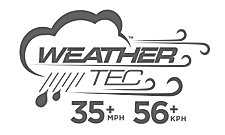
You might have noticed most Coleman tents include a WeatherTec™ rating in their description. But, what does WeatherTec™ actually mean?
Well, the Coleman WeatherTec™ rating is based on a controlled set of conditions that are used to test the performance of Coleman tents.
Coleman has purpose-built a tent testing facility where they can simulate all sorts of weather conditions in a controlled and repeatable environment. It’s literally called the “rain room”.
The standard Coleman rain test is based on spraying 35 gallons of water over a 10-minute period, then measuring how much water leaks into the tent. If more than 2 tablespoons of water leaks in, a tent fails the test.
In general, the WeatherTec™ seal of approval signifies a few key tent design and performance specifications:
- Ability to survive winds up to 35 mph (56 kph)
- Welded tent floors
- Inverted seams (seams on the inside of a tent)
- Zipper flaps
Personally, I’ve had only positive experiences with Coleman tents. But, I haven’t had to weather a torrential storm in one (yet).
Pro-tip: Unlike most high-performance tents, Coleman tents do not include tape or sealant on seams. This leaves seams vulnerable to water penetration in stormy weather. So, it’s good practice to use seam sealer to ensure nothing gets in. Check out my article Why Does a Tent Leak to see how easy it is to seam seal a tent yourself!
Some Tents Lack Full Rainfly
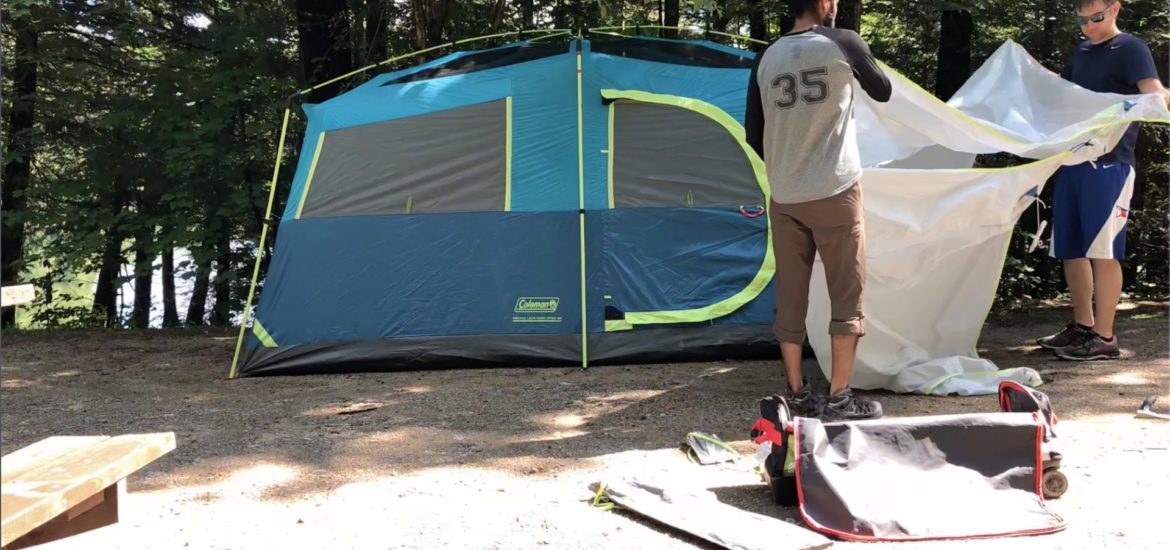
With the exception of backcountry tents, some Coleman tents are designed without a full rainfly.
A rainfly is meant to be a separate waterproof outer layer that shields the inner tent fabric from rain. It’s supposed to made from a waterproof material to shed rainwater and keep the tent dry in less than ideal conditions.
A full rainfly covers a tent from ground level to the top, 360 degrees. This is to ensure when it rains sideways your tent is always protected.
Coleman has chosen to design some tents with a partial rainfly. And, to prevent rain from entering, any exposed mesh sections like windows are built with a waterproof flap that zips open and closed.
Personally, having camped through some pretty nasty rain storms, a full rainfly is extremely important to me. Likewise, a covered vestibule area before entering my tent is valuable to dry off before entering.
So, if you are looking at Coleman tents, when it comes to protection from the rain:
- Make sure you choose a “full-fly” version
- Look for models with a covered vestibule
Do Coleman Tents Include a Warranty?
Coleman tents include a standard 1 year limited warranty. The warranty ensures the product will be free from defects in material and workmanship [Reference].
- The warranty is only valid for the original purchaser, with the original sales receipt, and is valid from the initial date of purchase
If the tent is deemed defective out of the box and does not perform as advertised, or there is a material issue with the tent, it can be covered under warranty.
However, normal wear and tear is not covered under the warranty. For example, damage due to storms, excessive use, animal attack, or improper care is not covered.
As a comparison, other tent manufacturers such as Big Agnes, REI, The North Face, Kelty and Marmot, offer limited warranty for the “product lifetime”.
Having said that, it’s up to individual companies to determine whether a product is covered under warranty, not you…
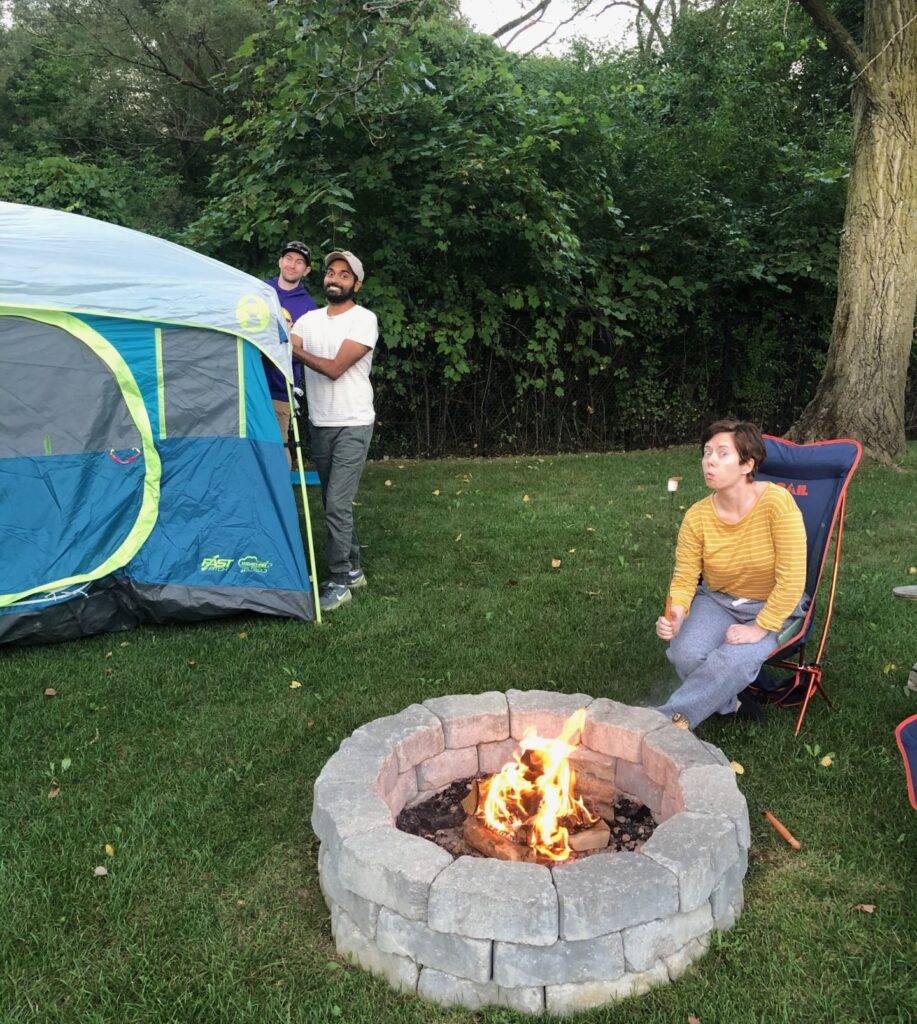
Best Coleman Tents [Top 3]
If you’re in the market for purchasing a good quality tent but only have a limited budget, a Coleman tent might be your best bet.
However, not all Coleman tents are designed and built equally. Some tents are vastly more superior than others.
It’s best to match your needs with the right Coleman tent, so it can perform well enough to match your expectations.
So, the following are the 3 best Coleman tents I highly recommend when it comes to quality and value.
Best Budget Coleman Camping Tent
Perfect for your first camping trip, the Coleman Sundome is a good quality and inexpensive tent for most campers.
- The dome style and two pole design is simple and takes less than 10 minutes to set up, even for a novice camper
- Interior mesh storage pockets are great for storing small gear and an electronic port makes it easy to run a power cable into your tent to charge devices
One drawback is the lack of a full rainfly, however, the tent cover does provide additional protection from the rain.
The Coleman Sundome is a perfect, low cost tent for car camping, festivals, or first time campers!
Best Family or Group Camping Coleman Tent
Large families require a lot more space when it comes to sleeping. Thankfully, Coleman has a wide selection of family and group camping tent options.
The Coleman Montana tent is one of the best tents for such occasions.
- It’s large enough to fit 8 adults or 3 queen size air beds. That’s a tonne of room!
- The Montana tent is a cabin design, with two primary poles in the center, and two outer poles
- It includes a rainfly to keep everyone dry when it’s stormy out
As a bonus, the rainfly extends outwards at the door, creating a sheltered area for campers as they enter and exit the tent.
The large mesh roof promotes air circulation, which helps keep campers cool in hot climates. Overall, this tent is great for large family car camping trips, backyard sleepovers, and festivals!
Best Backpacking Coleman Tent
For couples and small families looking to explore the backcountry on a budget, the Coleman Hooligan is a great option.
- A full mesh interior allows for maximum airflow during warm or humid nights
- The full rainfly design and fully taped rainfly seams offer enhanced protection from rain
Compared to other Coleman tents of a similar size, the Hooligan is light-weight and packs down fairly small making it perfect for backpacking!
This article contains affiliate links, which help support this blog at no cost to you!

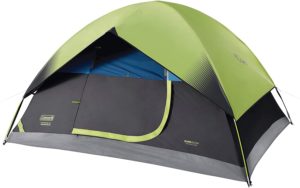
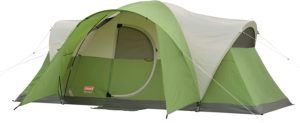
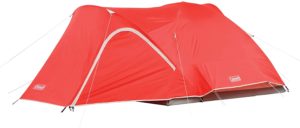
I would not recommend a Coleman tent. The fiberglass pole frayed at the metal connector the first time we used it. Coleman would not replace it but tried to sell us a new one.
Hi Lon,
Thanks for sharing your experience. Which Coleman tent model was it?
I actually mention the use of fiberglass poles in the article as a drawback for some Coleman tents. However, perhaps i’ve been lucky with fiberglass pole Coleman tents as I haven’t had your issue with the pole fraying before. I would strongly recommend that folks look for tents with aluminium tent poles for their high strength-to-weight ratio and durability. Yes, it’ll cost more, but it’ll also last a lot longer.
Happy camping,
Shane